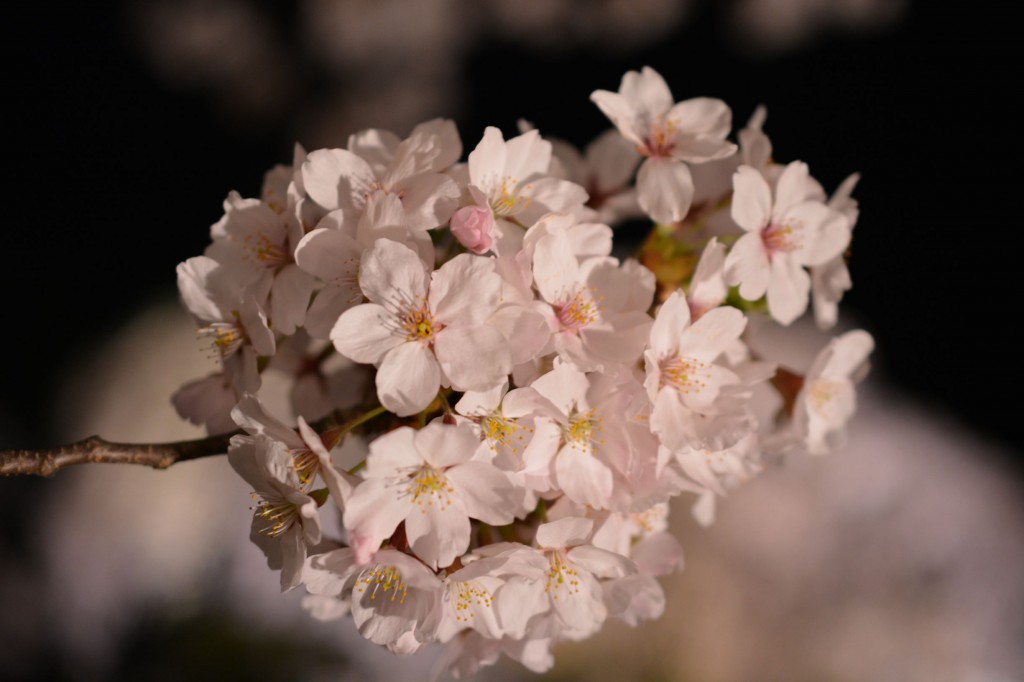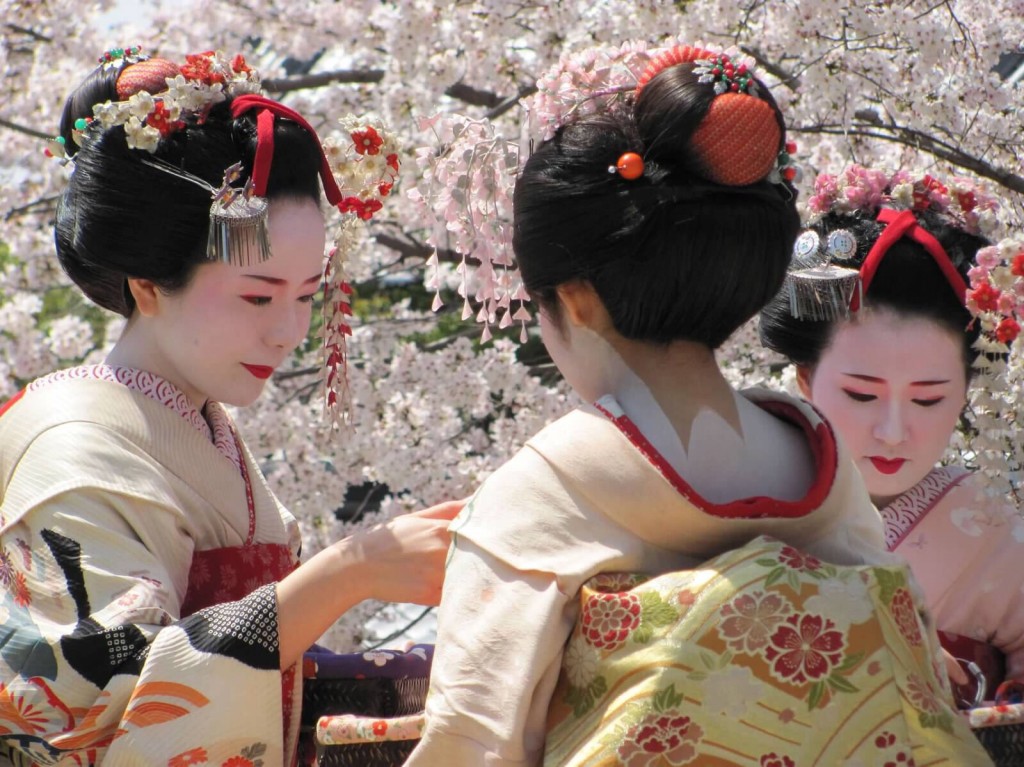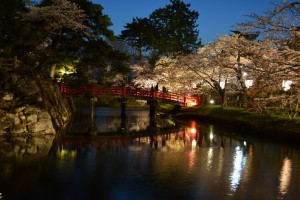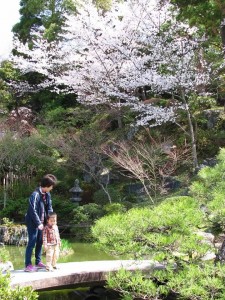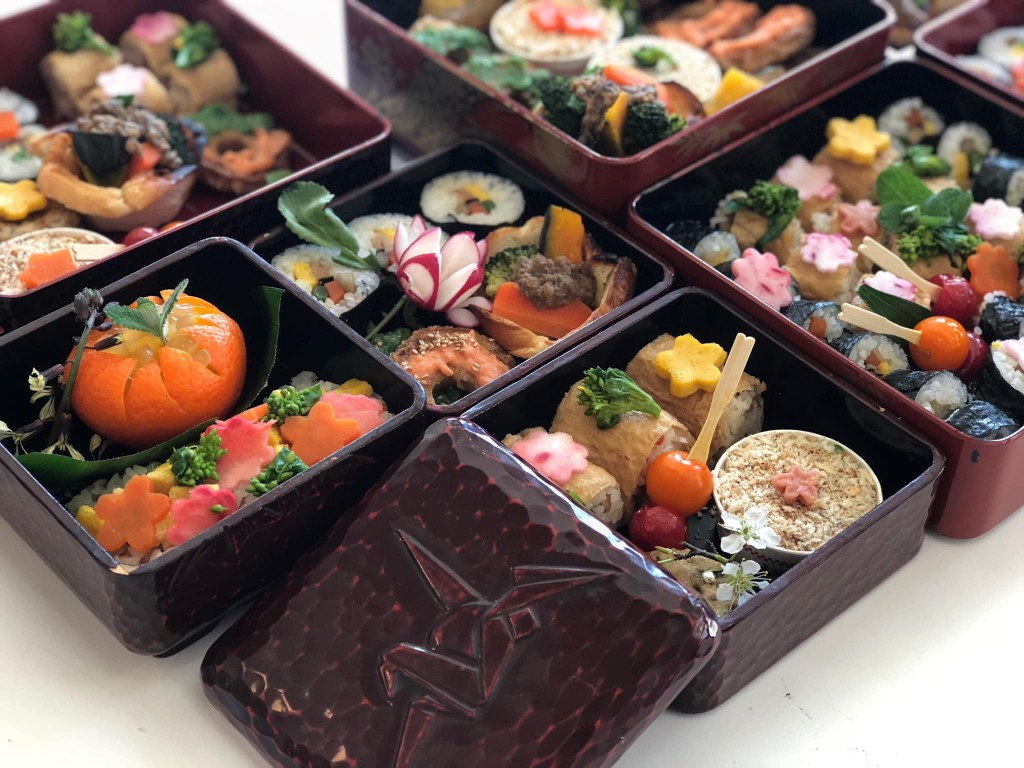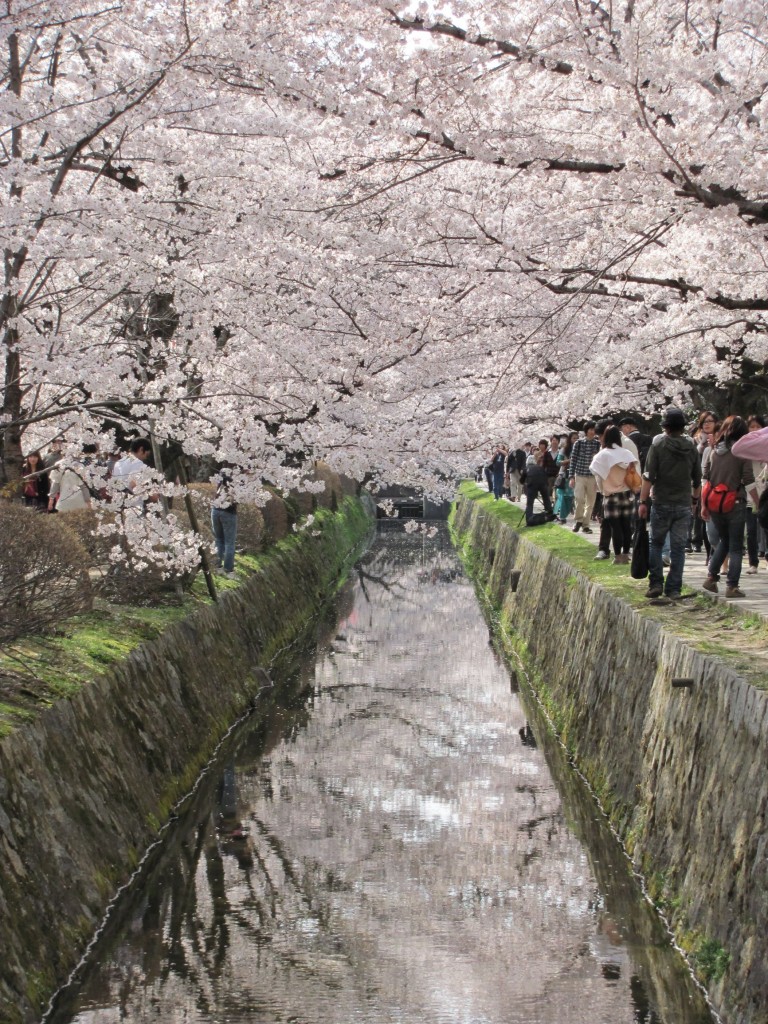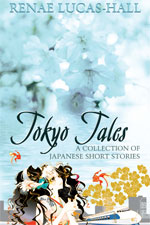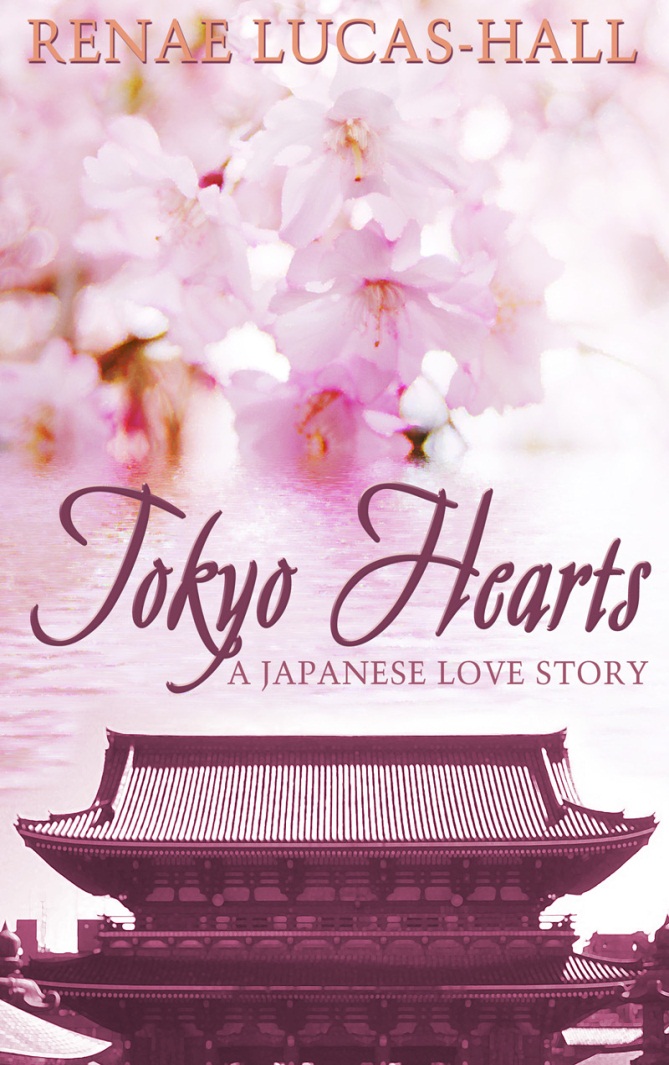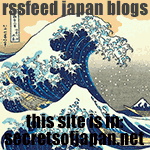I’ve already explained the significance of cherry blossoms (or sakura as they’re known in Japan) and how they represent the impermanence and fragility of life but I want to discuss their importance in the 21st century in this blog post and why they should be so highly regarded and valued now more than ever before.
CHERRY BLOSSOMS ACT AS A GATEWAY TO DEEPER ASPECTS OF THE JAPANESE CULTURE
In today’s world, you might develop an appreciation of sakura if you come across a modern design, photo, painting or scroll in your own country featuring cherry blossoms or if you visit Japan at this time of the year. This can become a gateway to appreciating more traditional aspects of the Japanese culture such as ikebana flower arrangement and tea ceremony. You could even develop an interest in Japan-related books (the kind I write!), in books written by Japanese authors as well as famous artists and people in Japan who are upholding traditional Japanese crafts.
There is evidence in Japanese literature, poetry and art that cherry blossoms and hanami (花見) (or cherry blossom viewing) have been appreciated for over 1,000 years. There are more than 21 references to cherry blossoms and plum blossoms in the famous novel The Tale of Genji by Murasaki Shikibu. Famous haiku poets like Matsuo Basho and Issa Kobayashi have dedicated poetry to these beautiful flowers and Reiji Hiramatsu and Kitagawa Utamaro are just two artists who have dedicated entire artworks to cherry blossoms. Take a look at this gorgeous photo by Sarah Hodge of the young maiko (apprentice geisha) posing next to the cherry blossom trees. Not only do the blossoms accentuate their beauty, this photo also makes you want to find out more about Japanese traditions.
Japan has changed a lot over the past 30 years. When I first lived in Japan the Japanese were optimistic about their careers, family life and the future but this has all changed since that economic bubble burst in the 1990s. Now Japan is faced with an ageing population, many young people are forgoing marriage in favour of leading a single life and according to National Geographic the Japanese government estimated there were approximately 540,000 hikikomori or socially reclusive individuals living in Japan in 2016 and this situation has become even worse over the past couple of years.
CHERRY BLOSSOMS COULD GIVE HIKIKOMORI RECLUSES A GOOD REASON TO LEAVE THE HOME
Psychologists and therapists who are dealing with the hikikomori know it takes time to convince these young people to leave their homes or their bedrooms where they’ve spent years hiding from the world. An invitation to stroll under the cherry blossoms for just half an hour might seem like a small step in the right direction for these reclusive individuals, but it can also have an extremely positive impact on their attitudes to the outside world and really help them to regain the confidence they need to re-join society.
Despite socio-economic problems and adversities, one natural occurrence remains constant every year all over Japan and that’s the cherry blossom season. In early spring, the custom of cherry blossom viewing not only attracts tourists from all over the world, it also draws millions of Japanese people out of their homes, schools and offices and into the parks, sidewalks and gardens. Here they can forget their worries for a few hours as they enjoy the good company of friends, families and colleagues while they admire the cherry blossoms.
CHERRY BLOSSOM AND PLUM BLOSSOM VIEWING CAN MAKE THE ELDERLY FEEL YOUNG AGAIN
According to Forbes, elderly people in Japan, traditionally defined as those 65 or older, total some 35.57 million, accounting for a record-high 28.1% of the population. What do the cherry blossoms mean to these elderly people? Many pensioners in Japan believe their country is changing and evolving too rapidly, many traditions are no longer upheld and the Western world is having a huge impact on the young. The older Japanese people feel Japan is no longer truly Japan and their homogenous society is breaking apart so cherry blossom and plum blossom viewing have become very important to the older generation. It evokes all sorts of great memories and reminds them of a time when they were more active and enjoying parties under the trees with their friends. It gives them a chance to feel young again.
JAPANESE PEOPLE LITERALLY AND FIGURATIVELY TAKE OFF THEIR MASKS AT HANAMI
In Japan it’s not uncommon to see someone wearing a mask over their mouth and nose if they have a cold or an unsightly pimple but in the past few years many people have started to wear masks over their faces as a sign they don’t want to talk to others or interact with other people. When a group of friends meet under the cherry blossom trees the pretty bento boxes filled with delicious food and the relaxed conversation means they can take off these masks and enjoy themselves for a few hours without any inhibitions.
TOURISTS WILL GET A DEEPER SENSE OF WHAT IT MEANS TO BE JAPANESE
If you’ve ever been to Japan during the cherry blossom season or if you live in Japan you cannot help but be impressed by the beauty of sakura and if you see large groups of people picnicking under the cherry blossoms it’s more than likely you’ll be very tempted to join them or arrange a party with a few friends or fellow travellers so you can take part in the festivities.
If you’re a tourist in Japan at any other time of the year, your impression of the Japanese people will be very positive but you might not see their true personality. You’ll definitely have the chance to observe many people sitting tight-lipped on trains looking down at their phones or reading their favourite manga comics. You’ll also come across a lot of very polite customer service representatives in department stores, hotels, Japanese traditional ryokan inns, at information desks and in shops who will be more than willing to show you the true meaning of omotenashi (Japanese hospitality) but hanami brings out the true spirit of the Japanese people so you’re more likely to see Japanese people just being themselves. This is a time when the Japanese are most relaxed. The simplicity of the occasion and the beauty of the petals really brings out the best in them. You might be planning a trip to Japan to coincide with the cherry blossom season but you’ll leave Japan knowing a lot more about the spirit of the Japanese people if you visit at this time of the year and that understanding will leave you with a deeper sense of what it means to be Japanese.
WESTERNERS GET THE OPPORTUNITY TO SEE JAPANESE PEOPLE SHOW THEIR TRUE PERSONALITIES
The most amazing transformation takes place when the sun sets in the evening and the colourful lights illuminate the cherry blossoms. Yozakura (夜桜) is the term used to describe cherry blossom viewing at night and this is a time when the Japanese people really start to shake off their inhibitions. The flowing alcohol and the cool air combined with the beauty of the blossoms provides the most wonderful setting. Company colleagues forge strong alliances as they take part in drinking games: you’ll see them loosening their ties and their faces becoming ruddy with intoxication as they scream out in playful defiance insisting they’ve just won a game. Couples on romantic dates will catch your eye and you’ll think it’s so cute the way they reach for each other’s hands as they admire the cherry blossoms, wondering when they should share their first kiss. You’ll also see large groups of high school friends or university mates huddled together. What you won’t know is they’re making promises to meet at that same place every year for the rest of their lives in order to relive this unforgettable hanami experience.
CHERRY BLOSSOMS ARE TRENDING
Cherry blossoms in Japan are gaining worldwide recognition. Even Kim Kardashian threw a cherry blossom themed baby shower and launched a cherry blossom-inspired makeup collection in 2018. Every year in Japan, a lot of well-known brands launch a cherry blossom-themed product in March/April to commemorate the season. You can try a Starbucks Sakura Latte, a Sakura Kit Kat, sakura-flavoured sake, sakura-flavoured crisps and all sorts of cakes and sweets made to taste and look like cherry blossoms. You’ve probably also noticed all of my books have a cherry blossom theme because I too have a huge appreciation for sakura.
CHERRY BLOSSOMS ARE HAVING A HUGE AFFECT AND MAJOR IMPACT ON INBOUND TOURISM
It’s easy to appreciate the cherry blossoms for their aesthetic qualities and especially the five petal somei-yoshino variety that’s so prevalent in Japan. The more cherry blossoms are admired all over the world the more Westerners will want to visit Japan and see the beautiful blossoms with their own eyes. The cherry blossoms are having a huge and very positive impact on inbound tourism, and interest in Japan from all over the world has amplified enormously in recent years thanks to the cherry blossom season (and other aspects of the culture such as manga and anime). Sakura, as always, continues to have a wonderful impact on Japanese society. I truly believe cherry blossoms are not only beautiful, I also think sakura and hanami will always be an extremely important and significant part of the Japanese culture now and in the future for the Japanese people and anyone with an interest in Japan.
All of the above photos (except the seventh photo of hanami courtesy of JNTO) are by Sarah Hodge @japantravelbug. A linguist and ESL instructor by trade, Sarah Hodge writes food and travel articles for several print and online publications including Stars and Stripes Japan, Tokyo Weekender and Metropolis Magazine. A long-time cookbook reviewer and cooking enthusiast, she also proofreads and recipe tests for upcoming cookbooks from a variety of genres. Sarah’s hobbies include travel, Japanese traditional crafts, Zen Buddhism, and digital photography.








